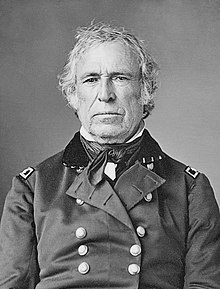📖 Presidential Profile
Comprehensive overview of leadership, policies, and historical significance
📋 Biography & Political Journey
Military Career and Rise to Presidency
Zachary Taylor earned the nickname “Old Rough and Ready” during his distinguished military career spanning over four decades. He gained national fame as a general in the Mexican-American War, particularly for his victories at the battles of Palo Alto, Resaca de la Palma, and Buena Vista. Despite having no prior political experience and never having voted in a presidential election before his own, Taylor was nominated by the Whig Party in 1848 due to his war hero status and broad appeal across party lines.
Taylor’s presidency began on March 4, 1849, during a time of intense national debate over slavery’s expansion into newly acquired territories from Mexico. As a slaveholder from Louisiana, many expected him to support the expansion of slavery, but Taylor surprised the nation by taking a moderate stance. He believed that California and New Mexico should be admitted as free states if their residents so chose, putting him at odds with many in his own party and the South.
His brief presidency was marked by efforts to preserve the Union while navigating the complex political landscape of the pre-Civil War era. Taylor was known for his straightforward, no-nonsense approach to governance, often bypassing traditional political channels. He met frequently with congressional leaders and worked to build coalitions across party lines, though his lack of political experience sometimes hindered his effectiveness in Washington’s complex political environment.
Controversial Decisions and Political Tensions
Taylor’s most controversial stance involved his opposition to the Compromise of 1850, which many politicians believed was necessary to prevent civil war. Despite being a slaveholder himself, Taylor threatened to use federal troops against any state that attempted to secede, putting him in direct conflict with Southern politicians who had supported his election. His refusal to support the expansion of slavery into new territories angered many of his Southern supporters, while his ownership of slaves troubled Northern abolitionists. Taylor also drew criticism for his “hands-off” approach to the slavery question, believing that allowing territories to decide for themselves would somehow resolve the national crisis.
The Cherry and Milk Incident
On July 4, 1850, President Taylor attended Independence Day celebrations at the Washington Monument, where he consumed large quantities of cold milk, iced water, and fresh cherries to combat the oppressive heat. Within hours, he became violently ill with severe cramping and diarrhea. Taylor died five days later on July 9, 1850, leading to wild conspiracy theories about poisoning. However, modern medical experts believe he likely died from gastroenteritis or typhoid fever. In 1991, Taylor’s body was even exhumed and tested for arsenic poisoning, but no evidence of foul play was found, confirming that America’s 12th president was indeed felled by summer fruit and dairy products.
Humor & Jokes
Taylor's Simple Style
Taylor dressed simply and was often mistaken for a farmer. Presidential fashion: functionality over formality.
Read More →Greatest Wins
🛤️ Supporting Infrastructure Development for National Unity
Taylor championed federal investment in roads and communications to bind the growing nation together economically…
Read More →Epic Fails
⚖️ Support for Immediate California and New Mexico Statehood
Taylor's push for rapid statehood without addressing slavery questions ignored constitutional procedures and inflamed sectional…
Read More →